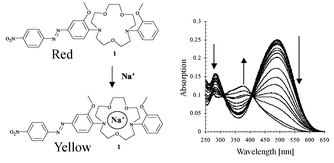Synthesis and evaluation of colorimetric chemosensors for monitoring sodium and potassium ions in the intracellular concentration range
Abstract
The azo-dye based colorimetric chemosensors 1 and 2 were designed for the detection of intracellular concentrations of Na+ and K+ respectively. The two sensors were synthesised from the o-anisidine based receptors 3 and 4 in a one step synthesis. Both displayed good selectivity and sensitivity for the relevant group I


 Please wait while we load your content...
Please wait while we load your content...